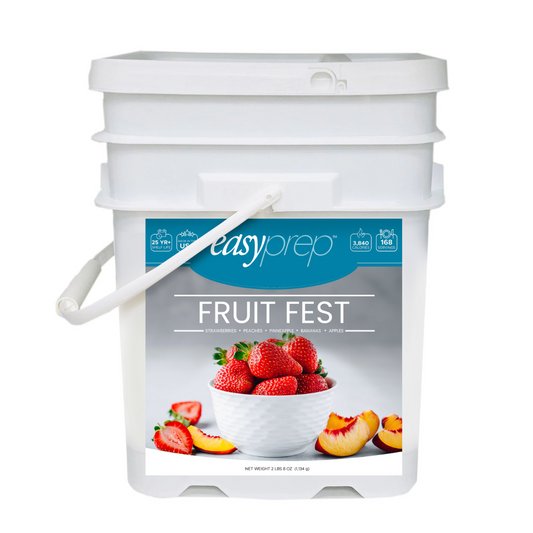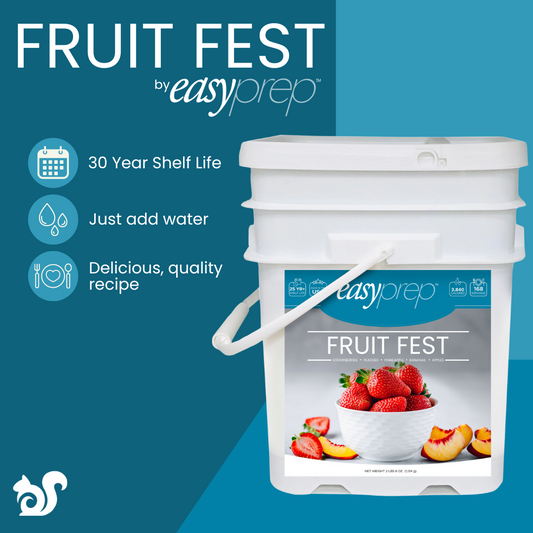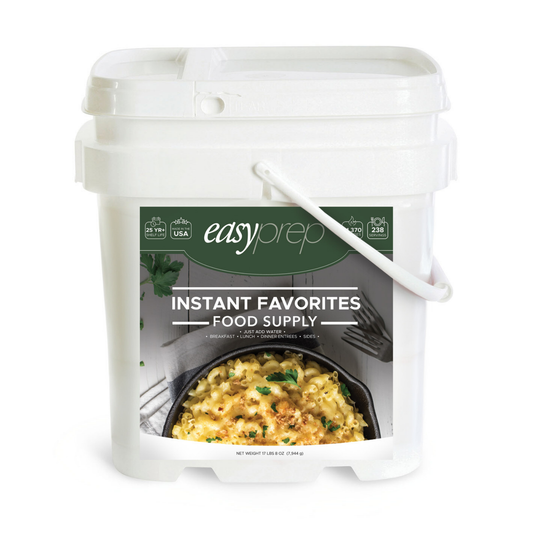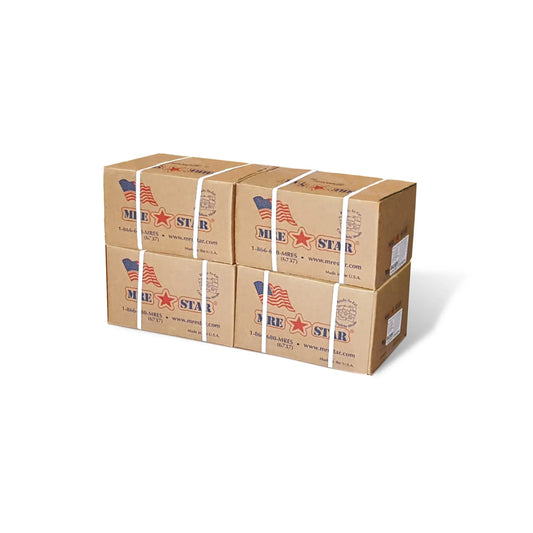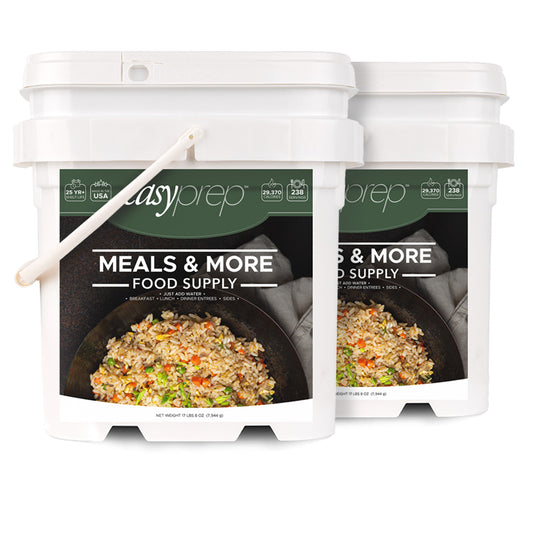How to Operate a HAM Radio
21 Jan 2015
HAM radio is a popular hobby that allows amateur operators to communicate with one another on multiple frequencies. It is also a useful skill to develop in the event of an emergency or disaster.
During a disaster, cell phones and internet might be out of service so having an alternative way to communicate with your family, friends or network is going to be crucial to obtaining information and ensuring you thrive during the emergency. Having a working HAM radio and knowing how to operate it will prove invaluable in a survival situation. Here’s what you need to know:
Licensing
To operate a HAM radio, you must obtain a license, but this is not particularly difficult. HAM operators call this “getting your ticket.”
To get a license, you will have to pay a small fee and take an exam. The Amateur Radio Relay League can help you find a testing site near you. There are different levels of licensing, each of which provides the operator with different rights:
• Technician. Allows the operator to transmit up to 100 watts on a limited number of frequencies.
• General. Allows the operator to transmit up to 1500 watts and operate on a larger number of frequencies
• Extra. Allows the operator to transmit up to 1500 watts on all frequencies.
In a disaster, licensing will be of little concern, but in the meantime it is best to practice on a General level to get a good feel for the range you can obtain at 1500 watts.
Here is a chart of the frequencies that each license may transmit on:
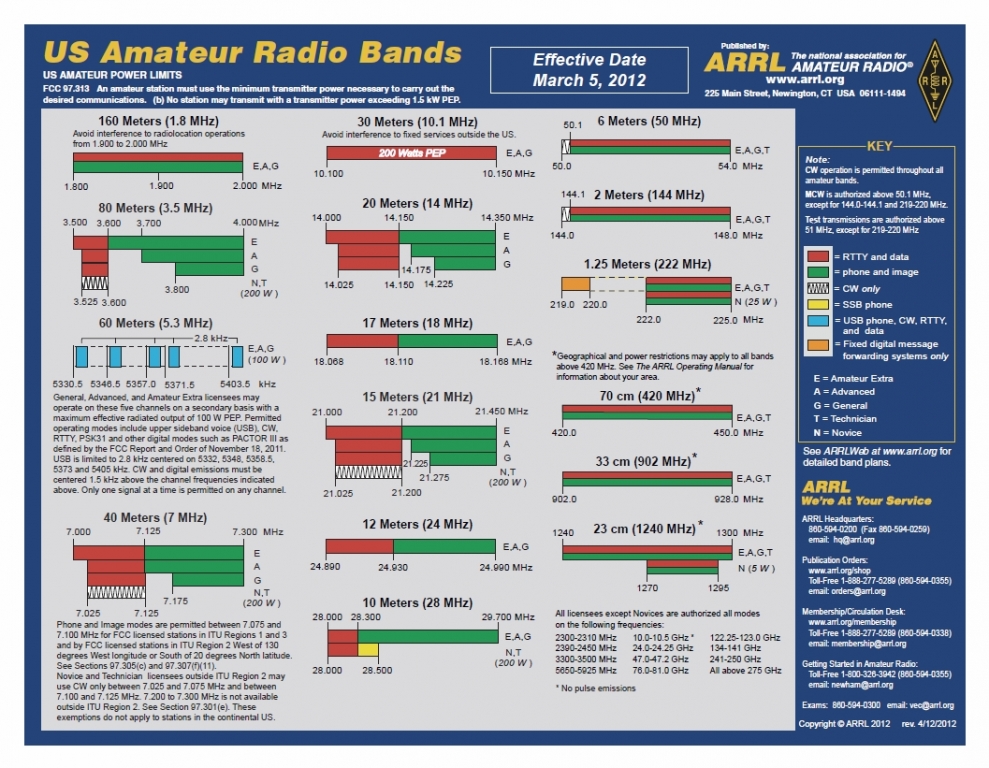 Equipment
You’ll need a few different items to get started as a HAM radio operator. These include:
Transceiver
A combination transmitter/receiver. This item has a broad price range, and what you will pay depends on how much wattage you want to be broadcasting with. More is better in most survival situations, but you can generally get a solid one for between $200-$500.
Power Supply
Powers the transceiver. You should be able to find one for less than $100. Make sure your power supply is compatible with the transceiver, however; you want to make sure you’re giving the transceiver enough power but not too much, which could blow a fuse.
Equipment
You’ll need a few different items to get started as a HAM radio operator. These include:
Transceiver
A combination transmitter/receiver. This item has a broad price range, and what you will pay depends on how much wattage you want to be broadcasting with. More is better in most survival situations, but you can generally get a solid one for between $200-$500.
Power Supply
Powers the transceiver. You should be able to find one for less than $100. Make sure your power supply is compatible with the transceiver, however; you want to make sure you’re giving the transceiver enough power but not too much, which could blow a fuse.
 Antenna
Another item with a broad price range, but with one that is about $50-$100 you will be able to transmit overseas. Depending on the kind you get, you will have to check with your local zoning laws to determine whether and how you can mount it.
Tuner
Either auto or manual; manual tuners are better for first-time HAM radio operators. The tuner links the antenna with the transceiver, and is important in making sure they are matched and properly using power.
Microphone
This is how you speak to other HAM operators. You can also invest in a “Key” to communicate using Morse code. Your microphone does not need to be very expensive in order to provide the audio quality you need to communicate with others.
Cables
For connecting your various parts. Having a few extra cables is always a good idea, particularly since you may not be able to acquire new ones after a collapse. The same goes for fuses, wires, and any other components of the HAM radio. You’ll want to be able to repair it yourself if something goes wrong.
Communicating with Morse Code
Turn on the HAM radio, and use the antenna tuner to get the “match” as close to 1-1 as you can. Find an open frequency, and ask more than once before you assume a frequency is open.
Of course, in a disaster, you may want to look for a frequency that is already in use if you’re trying to acquire information or connect with other survivors.
To check a frequency, send "Q-R-L" which means "Is anyone using this frequency?" If you're using a phone ham radio, just say, "This is [your callsign], is this frequncy busy?" Ask this twice and see if you can get an answer.
You can call anyone by sending the letters "CQ" as one word. For example, a typical call would be sent as, "CQ CQ CQ DE [your callsign] [your callsign] K." "DE" means "This is ..." and the "K" means "back to you." If you're using the CW mode, send the message twice in case the person wasn't copying it down fast enough the first time.
Here are some Q codes that might be helpful.
QRL - Is this frequency busy? (If in response, it means "Yes, please don't interfere")
QRM - Interference from another signal
QRN - Interference from natural or man-made static
QRO - Shall I increase power? (If in response ,it means "Yes, increase power")
QRP - Shall I decrease power? (If in response ,it means "Yes, decrease power")
QRQ - Shall I send faster? (If in response ,it means "Yes, send faster, at # words per minute")
QRS - Shall I send more slowly? (If in response ,it means "Yes, send slower, at # words per minute")
QRT - Shall I stop sending? (If in response, "Yes, stop sending")
QRU - Have anything more for me? (If in response, "No")
QRV - Are you ready? (If in response, "Yes, I am ready")
QRX - Standby
QRZ - Who is calling me?
QSB - Signal fading
QSL - Received and understood
QST - General call preceeding a message addressed to all amateurs
QSX - I am listening to __ kHz
QSY - Change to another frequency
QTH - What is your location (In response, "My location is __.")
Here are a few other helpful codes that are widely used and internationally recognized.
73 - Goodbye
88 - With love
SK - Signed off (the last thing you will send)
GL - Good luck
CU - See you
AGN - See you again
GM - Good morning
GA - Good afternoon
GD - Good day
PSE - Please
UR - Your or you're
OM - Old man
YL - Young lady or unmarried woman
XYL - Wife
Communicating via Phone Radio
If you're using a phone radio, you can start your message by saying, "Hello CQ CQ CQ this is [your callsign] [your callsign expanded (ie. Bravo Echo Charlie Whiskey)] [your callsign] calling 20 meters" Repeat that sentence again and then finish by saying "and standing by for a call."
If this is your first conversation, let the other person know that so they will be more understanding of the conversation.
Have some "cheat codes" like these below to help you remember what to say until you get used to conversing on the HAM radio:
Antenna
Another item with a broad price range, but with one that is about $50-$100 you will be able to transmit overseas. Depending on the kind you get, you will have to check with your local zoning laws to determine whether and how you can mount it.
Tuner
Either auto or manual; manual tuners are better for first-time HAM radio operators. The tuner links the antenna with the transceiver, and is important in making sure they are matched and properly using power.
Microphone
This is how you speak to other HAM operators. You can also invest in a “Key” to communicate using Morse code. Your microphone does not need to be very expensive in order to provide the audio quality you need to communicate with others.
Cables
For connecting your various parts. Having a few extra cables is always a good idea, particularly since you may not be able to acquire new ones after a collapse. The same goes for fuses, wires, and any other components of the HAM radio. You’ll want to be able to repair it yourself if something goes wrong.
Communicating with Morse Code
Turn on the HAM radio, and use the antenna tuner to get the “match” as close to 1-1 as you can. Find an open frequency, and ask more than once before you assume a frequency is open.
Of course, in a disaster, you may want to look for a frequency that is already in use if you’re trying to acquire information or connect with other survivors.
To check a frequency, send "Q-R-L" which means "Is anyone using this frequency?" If you're using a phone ham radio, just say, "This is [your callsign], is this frequncy busy?" Ask this twice and see if you can get an answer.
You can call anyone by sending the letters "CQ" as one word. For example, a typical call would be sent as, "CQ CQ CQ DE [your callsign] [your callsign] K." "DE" means "This is ..." and the "K" means "back to you." If you're using the CW mode, send the message twice in case the person wasn't copying it down fast enough the first time.
Here are some Q codes that might be helpful.
QRL - Is this frequency busy? (If in response, it means "Yes, please don't interfere")
QRM - Interference from another signal
QRN - Interference from natural or man-made static
QRO - Shall I increase power? (If in response ,it means "Yes, increase power")
QRP - Shall I decrease power? (If in response ,it means "Yes, decrease power")
QRQ - Shall I send faster? (If in response ,it means "Yes, send faster, at # words per minute")
QRS - Shall I send more slowly? (If in response ,it means "Yes, send slower, at # words per minute")
QRT - Shall I stop sending? (If in response, "Yes, stop sending")
QRU - Have anything more for me? (If in response, "No")
QRV - Are you ready? (If in response, "Yes, I am ready")
QRX - Standby
QRZ - Who is calling me?
QSB - Signal fading
QSL - Received and understood
QST - General call preceeding a message addressed to all amateurs
QSX - I am listening to __ kHz
QSY - Change to another frequency
QTH - What is your location (In response, "My location is __.")
Here are a few other helpful codes that are widely used and internationally recognized.
73 - Goodbye
88 - With love
SK - Signed off (the last thing you will send)
GL - Good luck
CU - See you
AGN - See you again
GM - Good morning
GA - Good afternoon
GD - Good day
PSE - Please
UR - Your or you're
OM - Old man
YL - Young lady or unmarried woman
XYL - Wife
Communicating via Phone Radio
If you're using a phone radio, you can start your message by saying, "Hello CQ CQ CQ this is [your callsign] [your callsign expanded (ie. Bravo Echo Charlie Whiskey)] [your callsign] calling 20 meters" Repeat that sentence again and then finish by saying "and standing by for a call."
If this is your first conversation, let the other person know that so they will be more understanding of the conversation.
Have some "cheat codes" like these below to help you remember what to say until you get used to conversing on the HAM radio:
 A - Alpha
B - Bravo
C - Charlie
D - Delta
E - Echo
F - Foxtrot
G - Golf
H - Hotel
I - India
J - Juliet
K - Kilo
L - Lima
M - Mike
N - November
O - Oscar
P - Papa
Q - Quebec
R - Romeo
S - Sierra
T - Tango
U - Uniform
V - Victor
W - Whiskey
X - X-ray
Y - Yankee
Z - Zulu
To end the conversation with phone radios, you will typically also say "73" as the final thing you say.
Even after you finish the conversation, you might not be finished. Some people will log a QSL card and send a snail-mail letter to the contact. Don't be surprised if you get a letter in the mail from your new HAM radio friend.
Your Advice
How did your experience go the first time you talked on a HAM radio? Any advice that you have for other people who might just be getting started? Comment and share below to help others.
A - Alpha
B - Bravo
C - Charlie
D - Delta
E - Echo
F - Foxtrot
G - Golf
H - Hotel
I - India
J - Juliet
K - Kilo
L - Lima
M - Mike
N - November
O - Oscar
P - Papa
Q - Quebec
R - Romeo
S - Sierra
T - Tango
U - Uniform
V - Victor
W - Whiskey
X - X-ray
Y - Yankee
Z - Zulu
To end the conversation with phone radios, you will typically also say "73" as the final thing you say.
Even after you finish the conversation, you might not be finished. Some people will log a QSL card and send a snail-mail letter to the contact. Don't be surprised if you get a letter in the mail from your new HAM radio friend.
Your Advice
How did your experience go the first time you talked on a HAM radio? Any advice that you have for other people who might just be getting started? Comment and share below to help others.
 Equipment
You’ll need a few different items to get started as a HAM radio operator. These include:
Transceiver
A combination transmitter/receiver. This item has a broad price range, and what you will pay depends on how much wattage you want to be broadcasting with. More is better in most survival situations, but you can generally get a solid one for between $200-$500.
Power Supply
Powers the transceiver. You should be able to find one for less than $100. Make sure your power supply is compatible with the transceiver, however; you want to make sure you’re giving the transceiver enough power but not too much, which could blow a fuse.
Equipment
You’ll need a few different items to get started as a HAM radio operator. These include:
Transceiver
A combination transmitter/receiver. This item has a broad price range, and what you will pay depends on how much wattage you want to be broadcasting with. More is better in most survival situations, but you can generally get a solid one for between $200-$500.
Power Supply
Powers the transceiver. You should be able to find one for less than $100. Make sure your power supply is compatible with the transceiver, however; you want to make sure you’re giving the transceiver enough power but not too much, which could blow a fuse.
 Antenna
Another item with a broad price range, but with one that is about $50-$100 you will be able to transmit overseas. Depending on the kind you get, you will have to check with your local zoning laws to determine whether and how you can mount it.
Tuner
Either auto or manual; manual tuners are better for first-time HAM radio operators. The tuner links the antenna with the transceiver, and is important in making sure they are matched and properly using power.
Microphone
This is how you speak to other HAM operators. You can also invest in a “Key” to communicate using Morse code. Your microphone does not need to be very expensive in order to provide the audio quality you need to communicate with others.
Cables
For connecting your various parts. Having a few extra cables is always a good idea, particularly since you may not be able to acquire new ones after a collapse. The same goes for fuses, wires, and any other components of the HAM radio. You’ll want to be able to repair it yourself if something goes wrong.
Communicating with Morse Code
Turn on the HAM radio, and use the antenna tuner to get the “match” as close to 1-1 as you can. Find an open frequency, and ask more than once before you assume a frequency is open.
Of course, in a disaster, you may want to look for a frequency that is already in use if you’re trying to acquire information or connect with other survivors.
To check a frequency, send "Q-R-L" which means "Is anyone using this frequency?" If you're using a phone ham radio, just say, "This is [your callsign], is this frequncy busy?" Ask this twice and see if you can get an answer.
You can call anyone by sending the letters "CQ" as one word. For example, a typical call would be sent as, "CQ CQ CQ DE [your callsign] [your callsign] K." "DE" means "This is ..." and the "K" means "back to you." If you're using the CW mode, send the message twice in case the person wasn't copying it down fast enough the first time.
Here are some Q codes that might be helpful.
QRL - Is this frequency busy? (If in response, it means "Yes, please don't interfere")
QRM - Interference from another signal
QRN - Interference from natural or man-made static
QRO - Shall I increase power? (If in response ,it means "Yes, increase power")
QRP - Shall I decrease power? (If in response ,it means "Yes, decrease power")
QRQ - Shall I send faster? (If in response ,it means "Yes, send faster, at # words per minute")
QRS - Shall I send more slowly? (If in response ,it means "Yes, send slower, at # words per minute")
QRT - Shall I stop sending? (If in response, "Yes, stop sending")
QRU - Have anything more for me? (If in response, "No")
QRV - Are you ready? (If in response, "Yes, I am ready")
QRX - Standby
QRZ - Who is calling me?
QSB - Signal fading
QSL - Received and understood
QST - General call preceeding a message addressed to all amateurs
QSX - I am listening to __ kHz
QSY - Change to another frequency
QTH - What is your location (In response, "My location is __.")
Here are a few other helpful codes that are widely used and internationally recognized.
73 - Goodbye
88 - With love
SK - Signed off (the last thing you will send)
GL - Good luck
CU - See you
AGN - See you again
GM - Good morning
GA - Good afternoon
GD - Good day
PSE - Please
UR - Your or you're
OM - Old man
YL - Young lady or unmarried woman
XYL - Wife
Communicating via Phone Radio
If you're using a phone radio, you can start your message by saying, "Hello CQ CQ CQ this is [your callsign] [your callsign expanded (ie. Bravo Echo Charlie Whiskey)] [your callsign] calling 20 meters" Repeat that sentence again and then finish by saying "and standing by for a call."
If this is your first conversation, let the other person know that so they will be more understanding of the conversation.
Have some "cheat codes" like these below to help you remember what to say until you get used to conversing on the HAM radio:
Antenna
Another item with a broad price range, but with one that is about $50-$100 you will be able to transmit overseas. Depending on the kind you get, you will have to check with your local zoning laws to determine whether and how you can mount it.
Tuner
Either auto or manual; manual tuners are better for first-time HAM radio operators. The tuner links the antenna with the transceiver, and is important in making sure they are matched and properly using power.
Microphone
This is how you speak to other HAM operators. You can also invest in a “Key” to communicate using Morse code. Your microphone does not need to be very expensive in order to provide the audio quality you need to communicate with others.
Cables
For connecting your various parts. Having a few extra cables is always a good idea, particularly since you may not be able to acquire new ones after a collapse. The same goes for fuses, wires, and any other components of the HAM radio. You’ll want to be able to repair it yourself if something goes wrong.
Communicating with Morse Code
Turn on the HAM radio, and use the antenna tuner to get the “match” as close to 1-1 as you can. Find an open frequency, and ask more than once before you assume a frequency is open.
Of course, in a disaster, you may want to look for a frequency that is already in use if you’re trying to acquire information or connect with other survivors.
To check a frequency, send "Q-R-L" which means "Is anyone using this frequency?" If you're using a phone ham radio, just say, "This is [your callsign], is this frequncy busy?" Ask this twice and see if you can get an answer.
You can call anyone by sending the letters "CQ" as one word. For example, a typical call would be sent as, "CQ CQ CQ DE [your callsign] [your callsign] K." "DE" means "This is ..." and the "K" means "back to you." If you're using the CW mode, send the message twice in case the person wasn't copying it down fast enough the first time.
Here are some Q codes that might be helpful.
QRL - Is this frequency busy? (If in response, it means "Yes, please don't interfere")
QRM - Interference from another signal
QRN - Interference from natural or man-made static
QRO - Shall I increase power? (If in response ,it means "Yes, increase power")
QRP - Shall I decrease power? (If in response ,it means "Yes, decrease power")
QRQ - Shall I send faster? (If in response ,it means "Yes, send faster, at # words per minute")
QRS - Shall I send more slowly? (If in response ,it means "Yes, send slower, at # words per minute")
QRT - Shall I stop sending? (If in response, "Yes, stop sending")
QRU - Have anything more for me? (If in response, "No")
QRV - Are you ready? (If in response, "Yes, I am ready")
QRX - Standby
QRZ - Who is calling me?
QSB - Signal fading
QSL - Received and understood
QST - General call preceeding a message addressed to all amateurs
QSX - I am listening to __ kHz
QSY - Change to another frequency
QTH - What is your location (In response, "My location is __.")
Here are a few other helpful codes that are widely used and internationally recognized.
73 - Goodbye
88 - With love
SK - Signed off (the last thing you will send)
GL - Good luck
CU - See you
AGN - See you again
GM - Good morning
GA - Good afternoon
GD - Good day
PSE - Please
UR - Your or you're
OM - Old man
YL - Young lady or unmarried woman
XYL - Wife
Communicating via Phone Radio
If you're using a phone radio, you can start your message by saying, "Hello CQ CQ CQ this is [your callsign] [your callsign expanded (ie. Bravo Echo Charlie Whiskey)] [your callsign] calling 20 meters" Repeat that sentence again and then finish by saying "and standing by for a call."
If this is your first conversation, let the other person know that so they will be more understanding of the conversation.
Have some "cheat codes" like these below to help you remember what to say until you get used to conversing on the HAM radio:
 A - Alpha
B - Bravo
C - Charlie
D - Delta
E - Echo
F - Foxtrot
G - Golf
H - Hotel
I - India
J - Juliet
K - Kilo
L - Lima
M - Mike
N - November
O - Oscar
P - Papa
Q - Quebec
R - Romeo
S - Sierra
T - Tango
U - Uniform
V - Victor
W - Whiskey
X - X-ray
Y - Yankee
Z - Zulu
To end the conversation with phone radios, you will typically also say "73" as the final thing you say.
Even after you finish the conversation, you might not be finished. Some people will log a QSL card and send a snail-mail letter to the contact. Don't be surprised if you get a letter in the mail from your new HAM radio friend.
Your Advice
How did your experience go the first time you talked on a HAM radio? Any advice that you have for other people who might just be getting started? Comment and share below to help others.
A - Alpha
B - Bravo
C - Charlie
D - Delta
E - Echo
F - Foxtrot
G - Golf
H - Hotel
I - India
J - Juliet
K - Kilo
L - Lima
M - Mike
N - November
O - Oscar
P - Papa
Q - Quebec
R - Romeo
S - Sierra
T - Tango
U - Uniform
V - Victor
W - Whiskey
X - X-ray
Y - Yankee
Z - Zulu
To end the conversation with phone radios, you will typically also say "73" as the final thing you say.
Even after you finish the conversation, you might not be finished. Some people will log a QSL card and send a snail-mail letter to the contact. Don't be surprised if you get a letter in the mail from your new HAM radio friend.
Your Advice
How did your experience go the first time you talked on a HAM radio? Any advice that you have for other people who might just be getting started? Comment and share below to help others.



